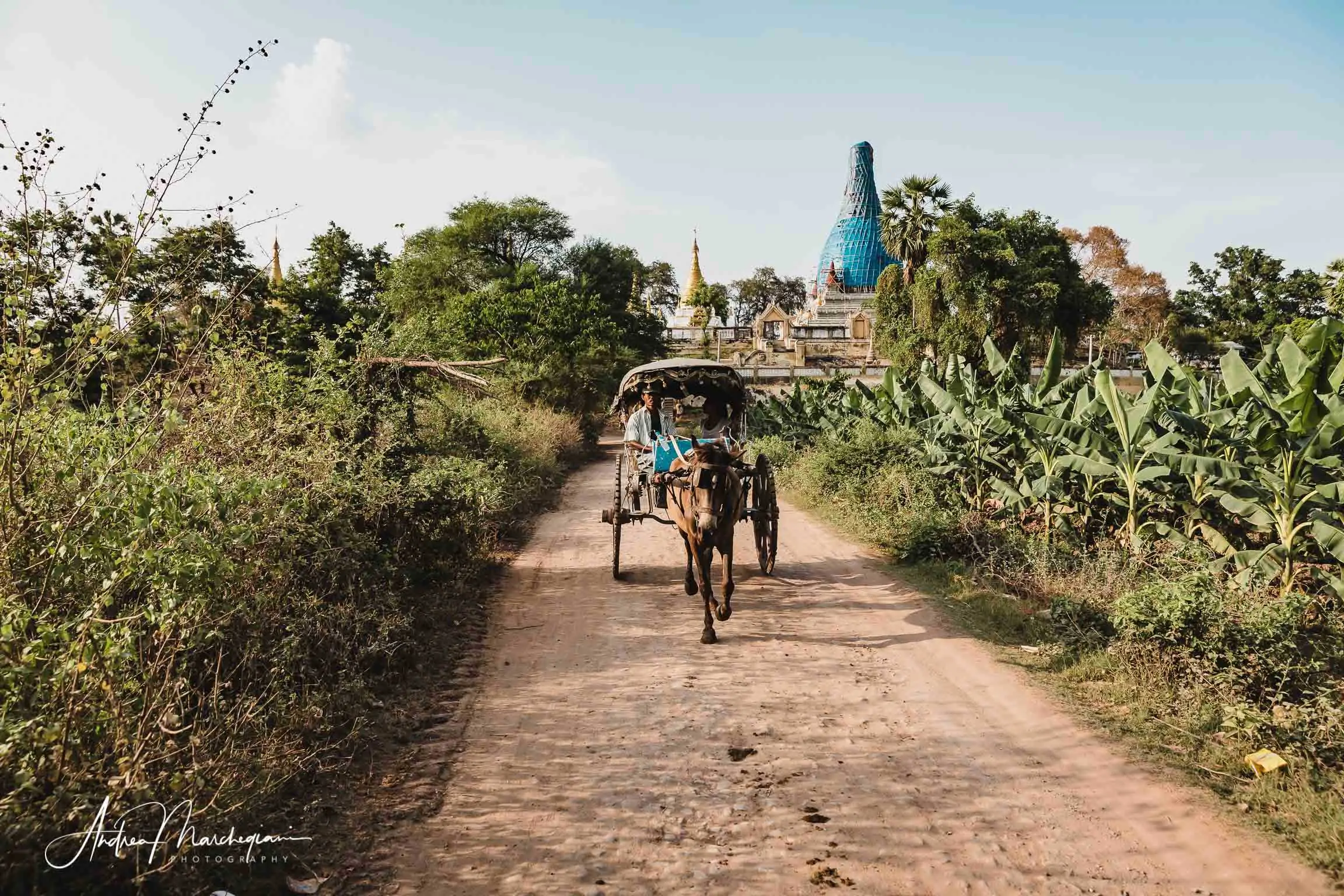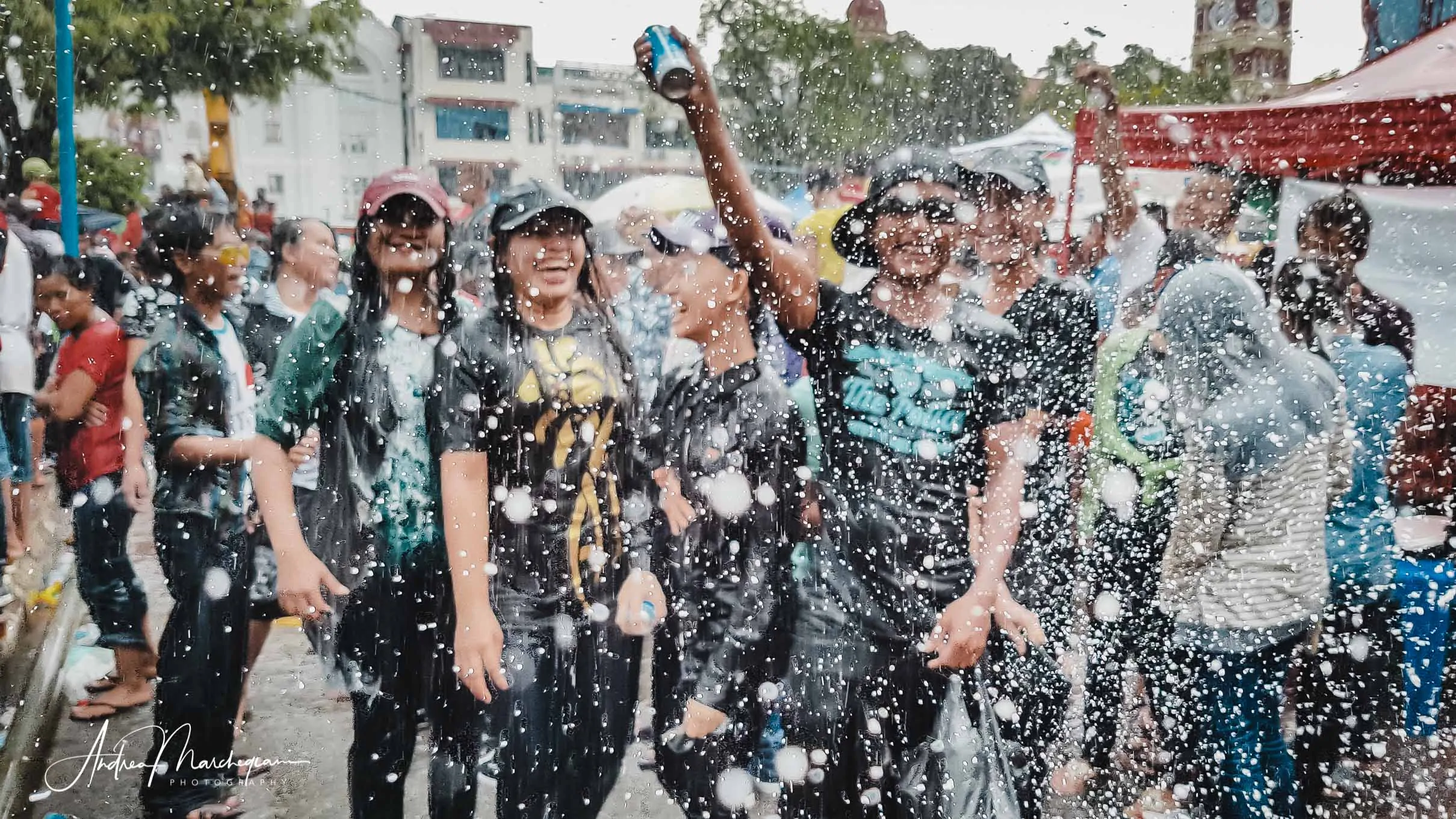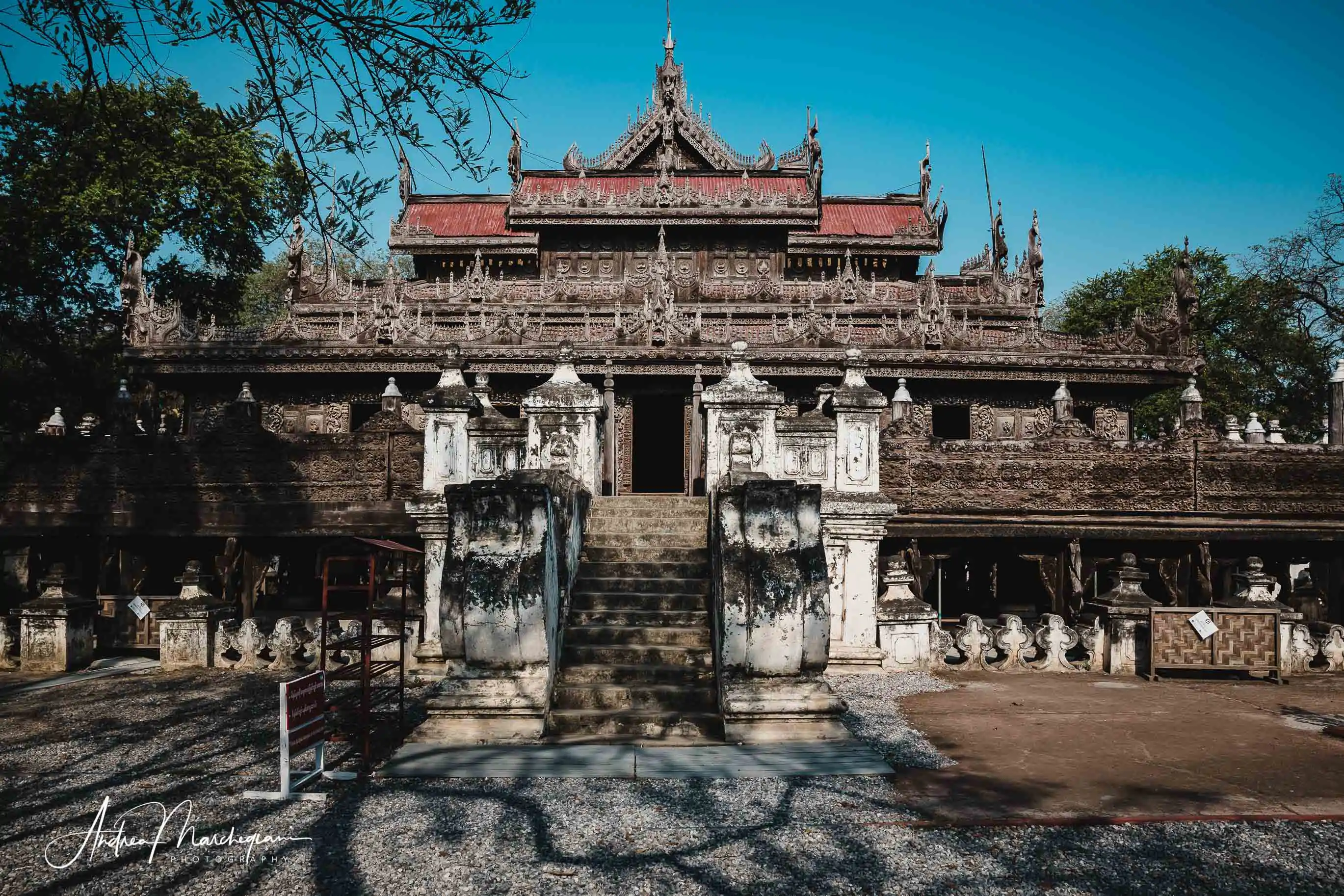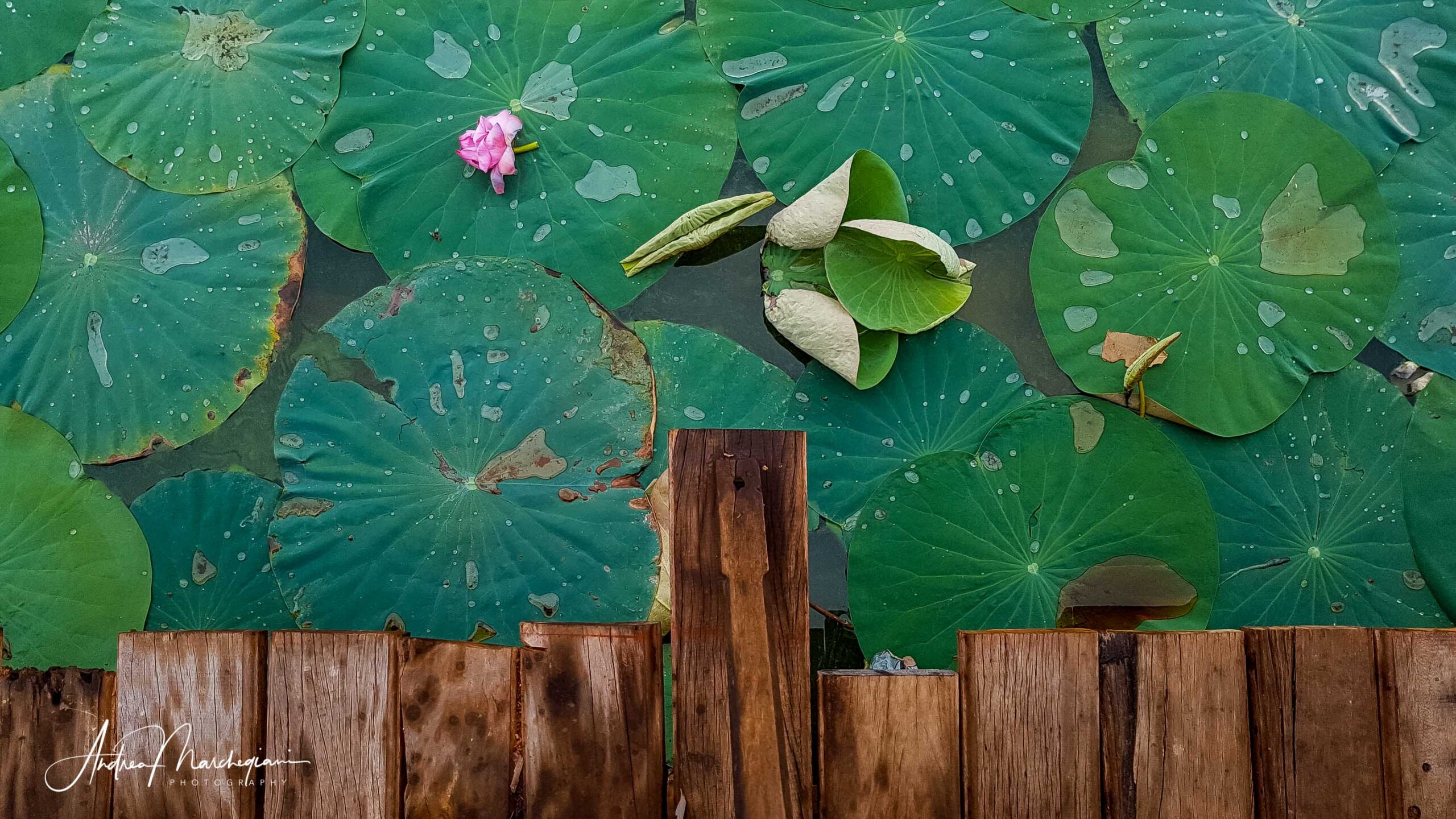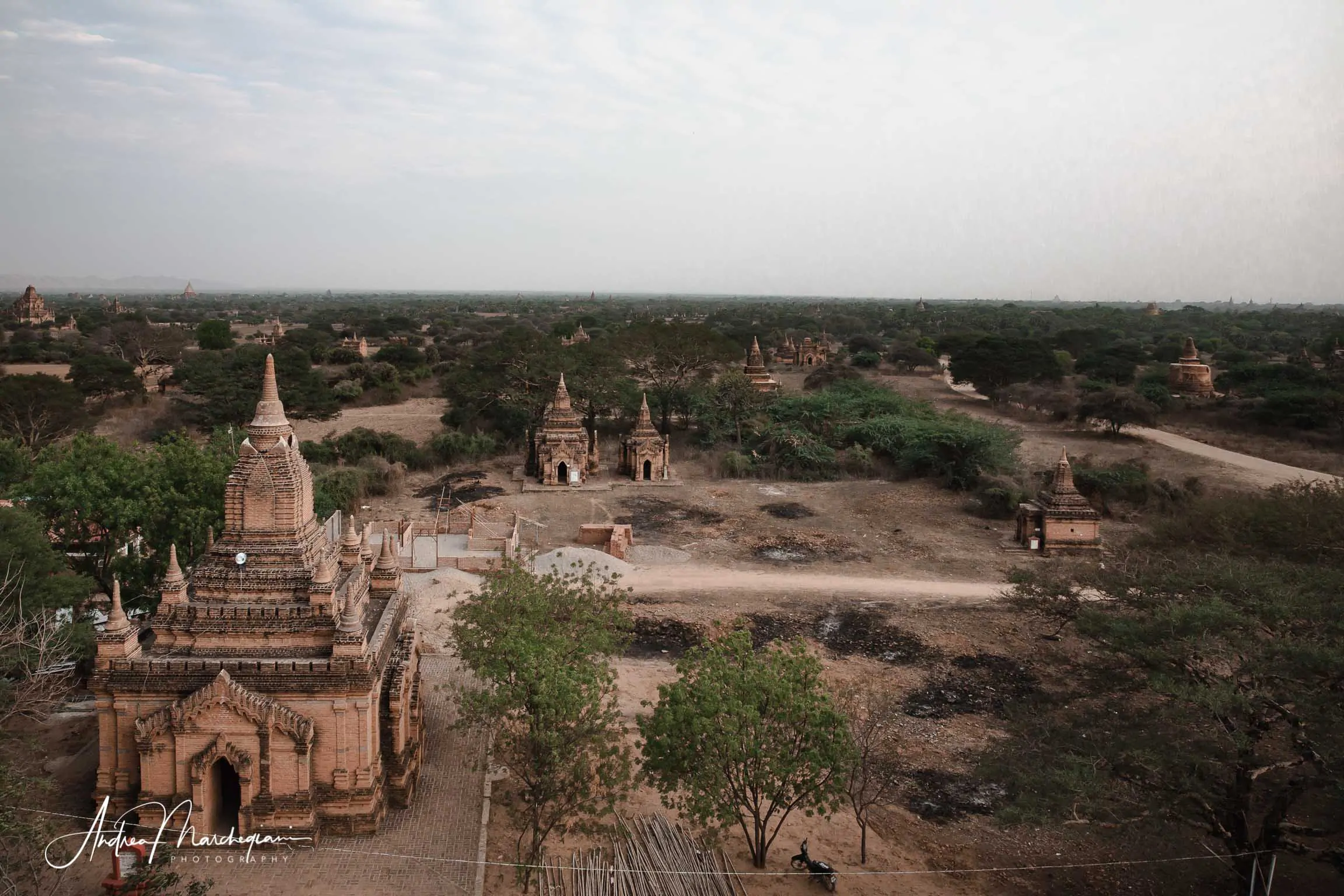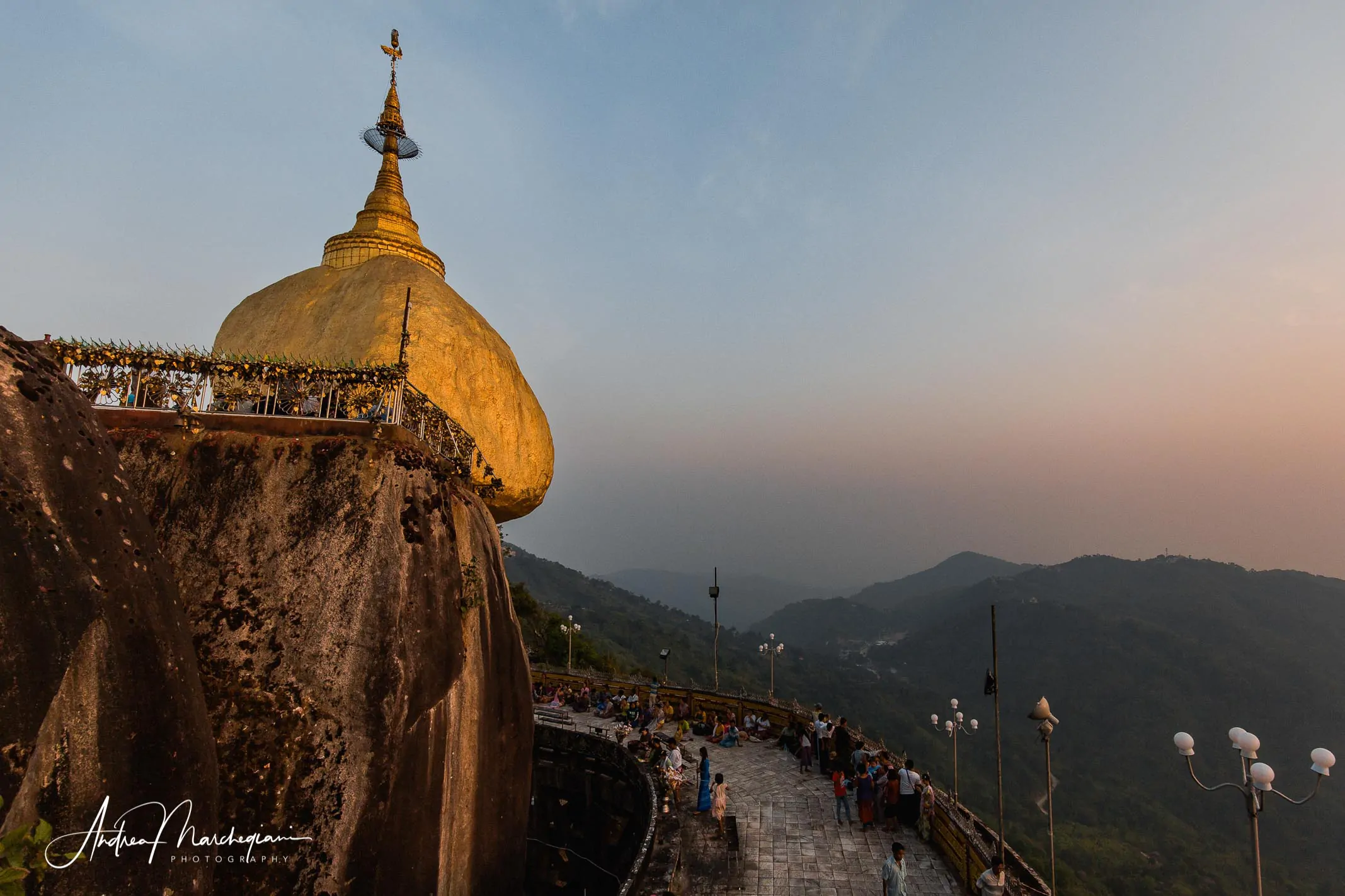
- Home
- Photo Galleries
- Portrait Photography
- Landscape Photography
- Street Photography
- China
- Ethiopia
- India
- Holy Ganges
- Varanasi
- Varanasi Ganga Aarti
- Varanasi, Manikarnika Ghat
- Varanasi Streets & Alleys
- Varanasi Demolition
- Varanasi Fruit Market
- Sarnath
- Brick Kilns
- Tamil Nadu, Chennai & Mamallapuram
- Tamil Nadu, Fort Tirumayam & Madurai
- Tamil Nadu, Tiruvannamalai & Thanjavur
- Kerala, Munnar
- Kerala, Peryiar
- Kerala, Backwaters
- Kerala, Kochi
- Kazakhstan
- Myanmar
- Senegal
- Uzbekistan
- Travel Blog
- China
- Ethiopia
- India
- Tamil Nadu & Kerala
- Varanasi
- Whato to do in Varanasi
- Varanasi Life along the Ghats
- Varanasi Death along the Ghats
- Varanasi Ganga Aarti Ceremony
- Varanasi demolished to honor Shiva
- Varanasi Fruit Market
- “Varanasi, A Journey into the Infinite”
- Sarnath
- All about River Ganges
- Holy Shit. All about Indian Cow Dung
- Clean India Project
- Brick factories
- Tilaka, pundra, bindi: what is the mark on Indian foreheads?
- Kazakhstan
- Mongolia
- Ulaanbaatar, the coldest capital in the world
- What to do in Ulaanbaatar
- Chinggis Khan Museum, 6 floors of Mongolian history
- Gorkhi-Terelj National Park and Bodgkhan Natural Reserve
- Altai Mountains, Things to do in Olgii and Sagsai
- Living with the Eagle Hunters
- Sagsai Eagle Festival
- Navrus Festival
- Xöömej, Mongolian throat singing
- Mongolian Food
- Myanmar
- Senegal
- Uzbekistan
- Latest Posts
- Photography Blog
- About
- Prints
For many centuries Burma was called the Kingdom of Ava. Where once stood the capital of Myanmar, today there is a humble village of peasants. Pretty incredible, isn’t it? Today Ava looks decadent and in ruins, but I am enchanted by the sober and serene everyday life people live there.
Share with your friends:
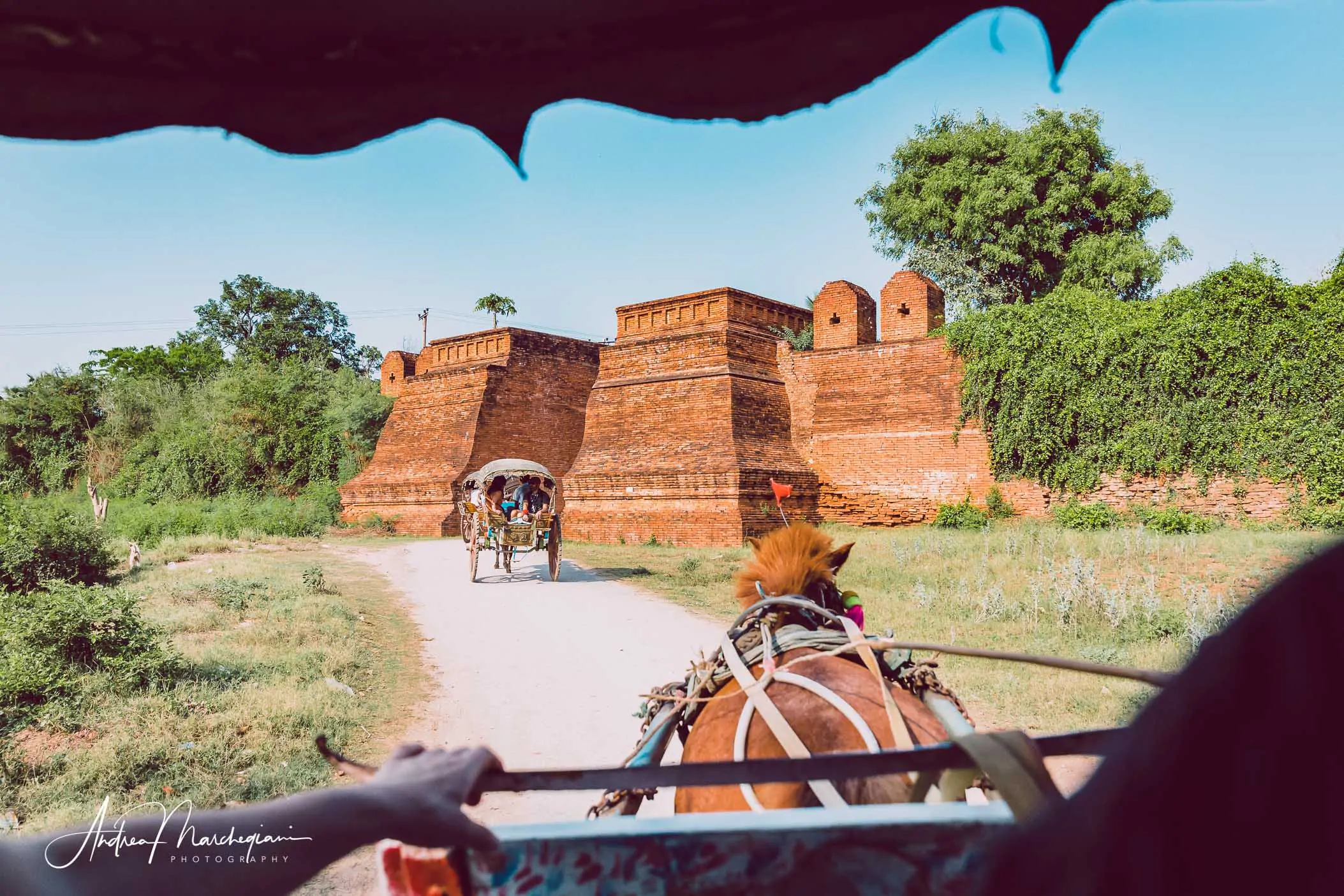
Kingdom of Ava
Ava, which in Burmese means “city of gems”, was four times the capital of Burma between 1300 and 1800. It is located near the Irrawaddy River, a few kilometers from Amarapura, on the souther outskirts of Mandalay.
Many tourists visit Ava in a carriage, so they can enjoy the ruins of the stupas and the pagodas scattered here and there which make Ava look like the spectacular Pagan. Along the vast grasslands, palm groves and cultivated fields you can get a taste of the daily life of the farmers of the neighboring village Inwwa.
The wooden carts pulled by the oxen and the women who still wash the clothes on the banks of the river are a real hot broth for the soul.
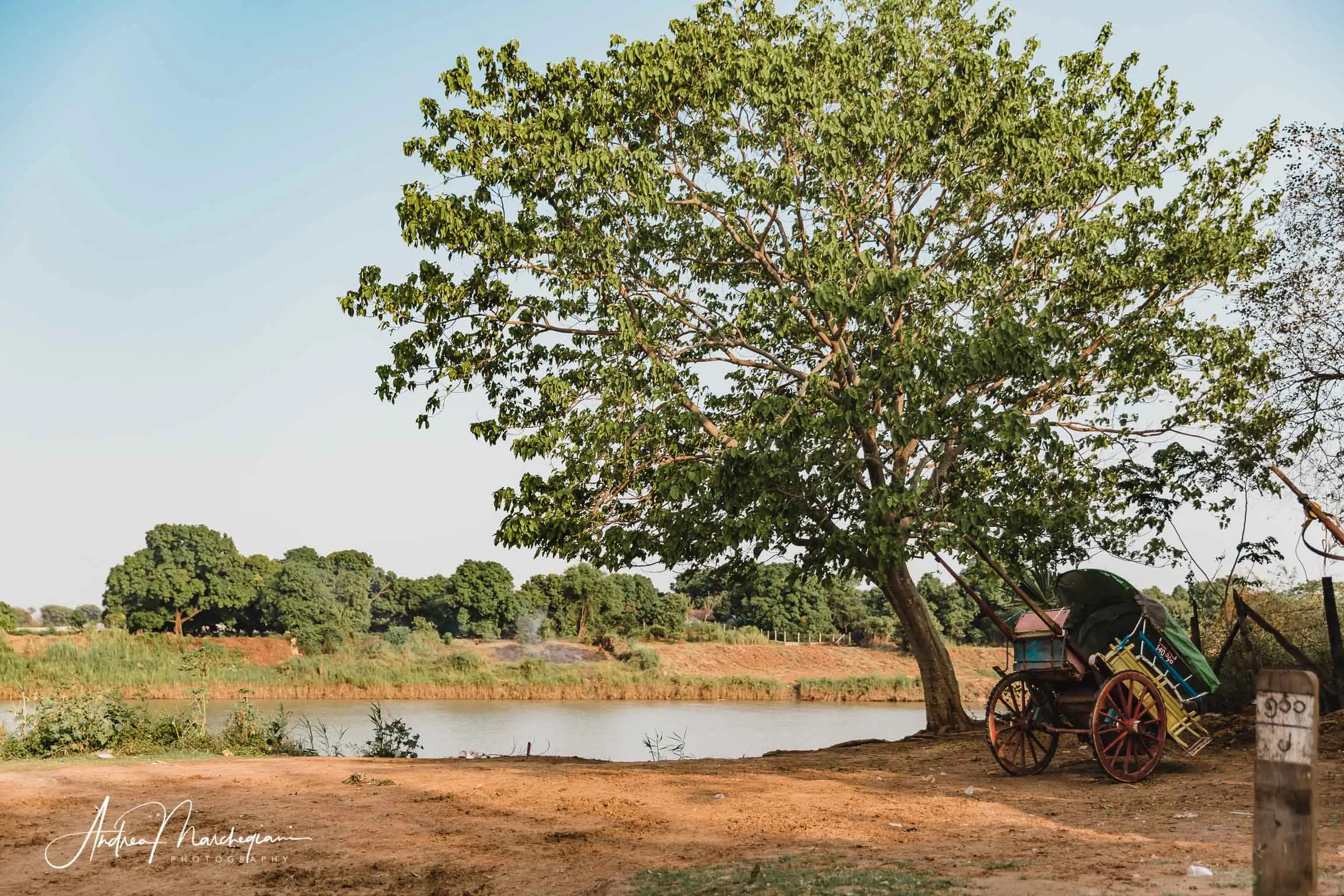
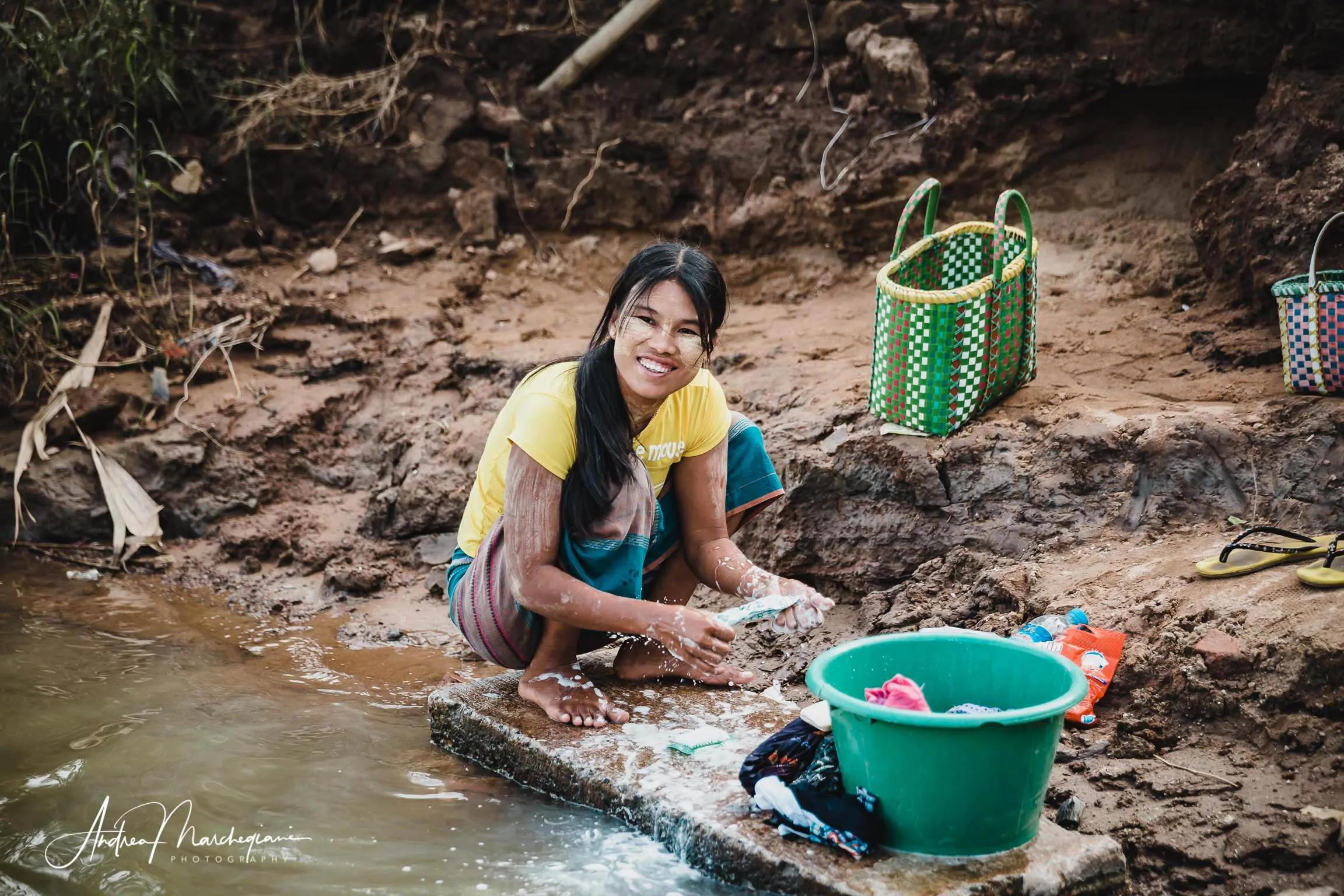
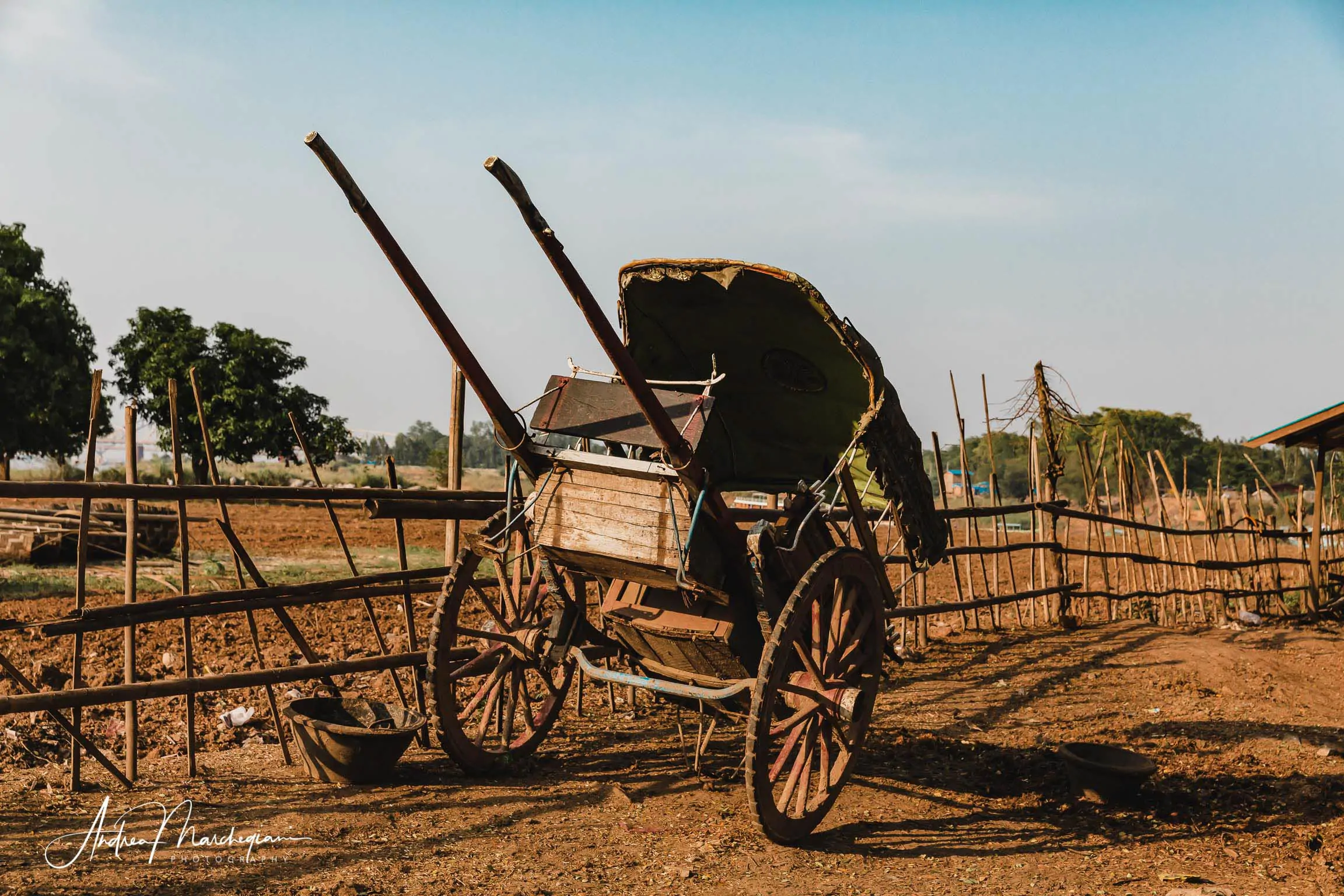
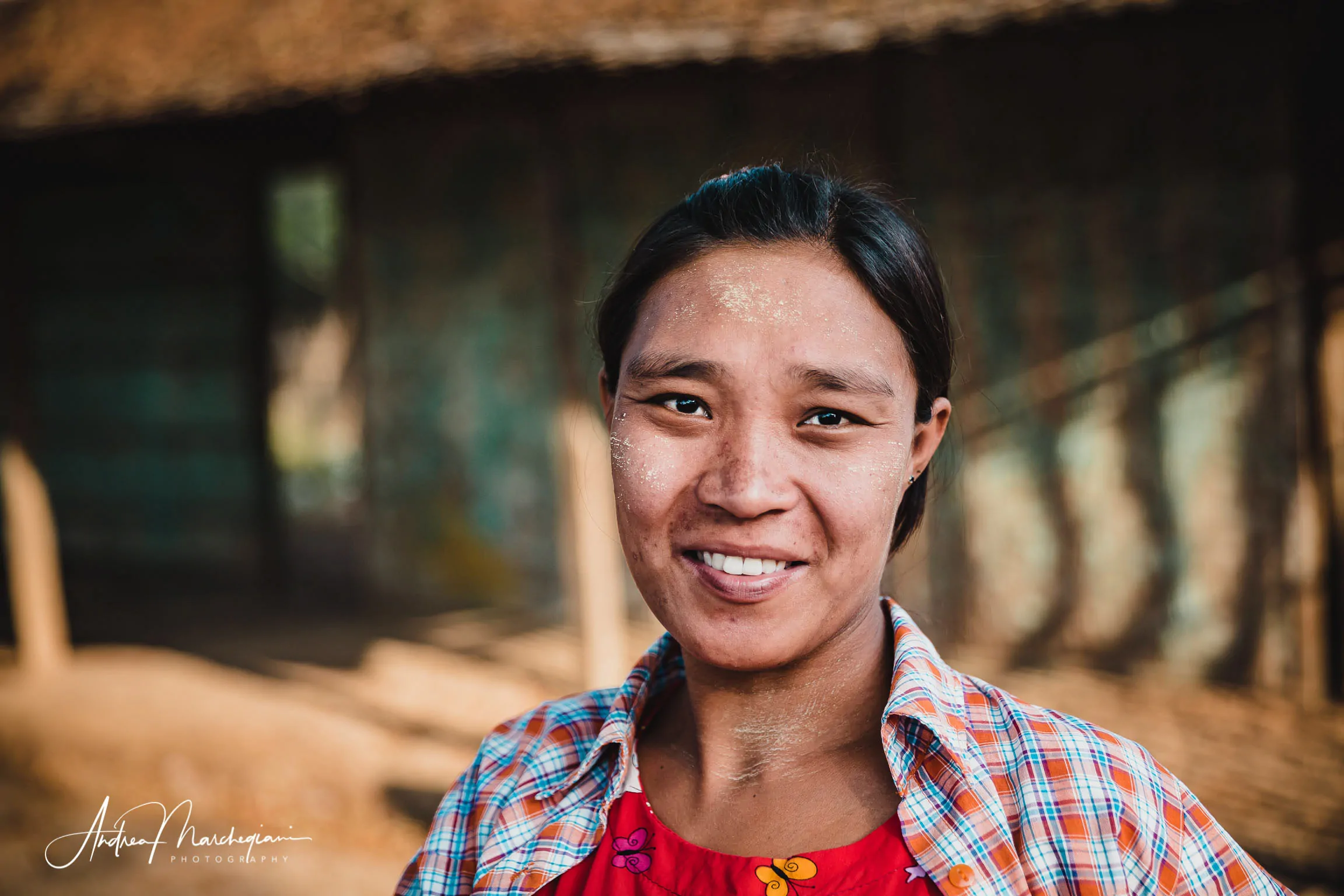
Ava is only accessible by boat, because it is located on an artificial islet formed at the confluence of two rivers, the Myitnge and the Irrawaddy.
I visit it on a sunny day: the afternoon light caresses the branches of the trees and enhances the remains of the ancient royal seat, making everything look magical.
As soon as I reach the island, I get on on a wooden carriage, with the sunshade decorated with embroidered fabrics and guided by a horse with a brushed mane. The coachman has a kind and sincere smile, as you can only see in Myanmar. We go through earthy and difficult streets, especially in the stretches that line the cultivated plots. Before each pothole, the driver makes sure that I hold on tight to avoid jumping; He’s right to remind me, as I am so fascinated by the scenarios I could jump out of the buggy without even noticing.
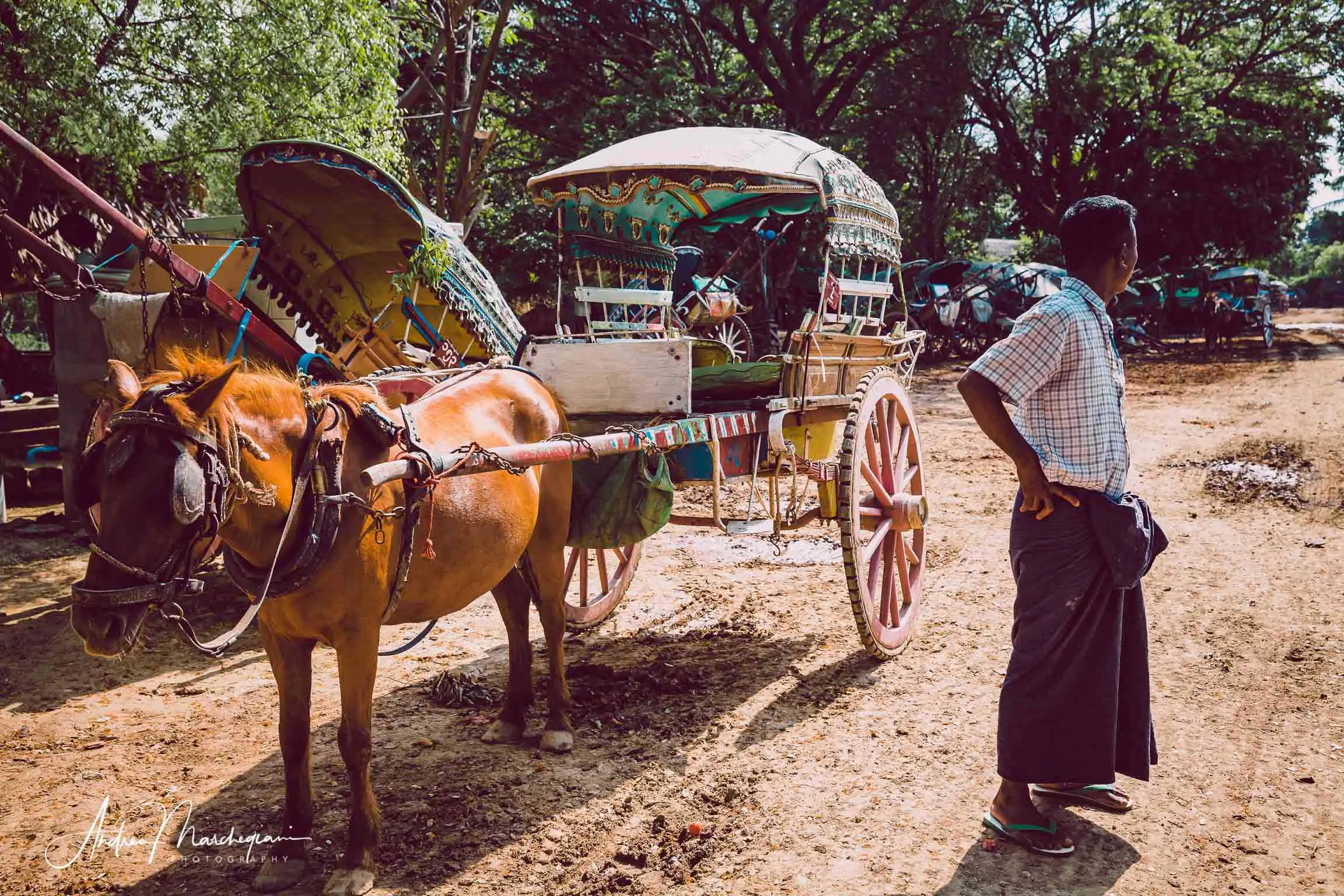
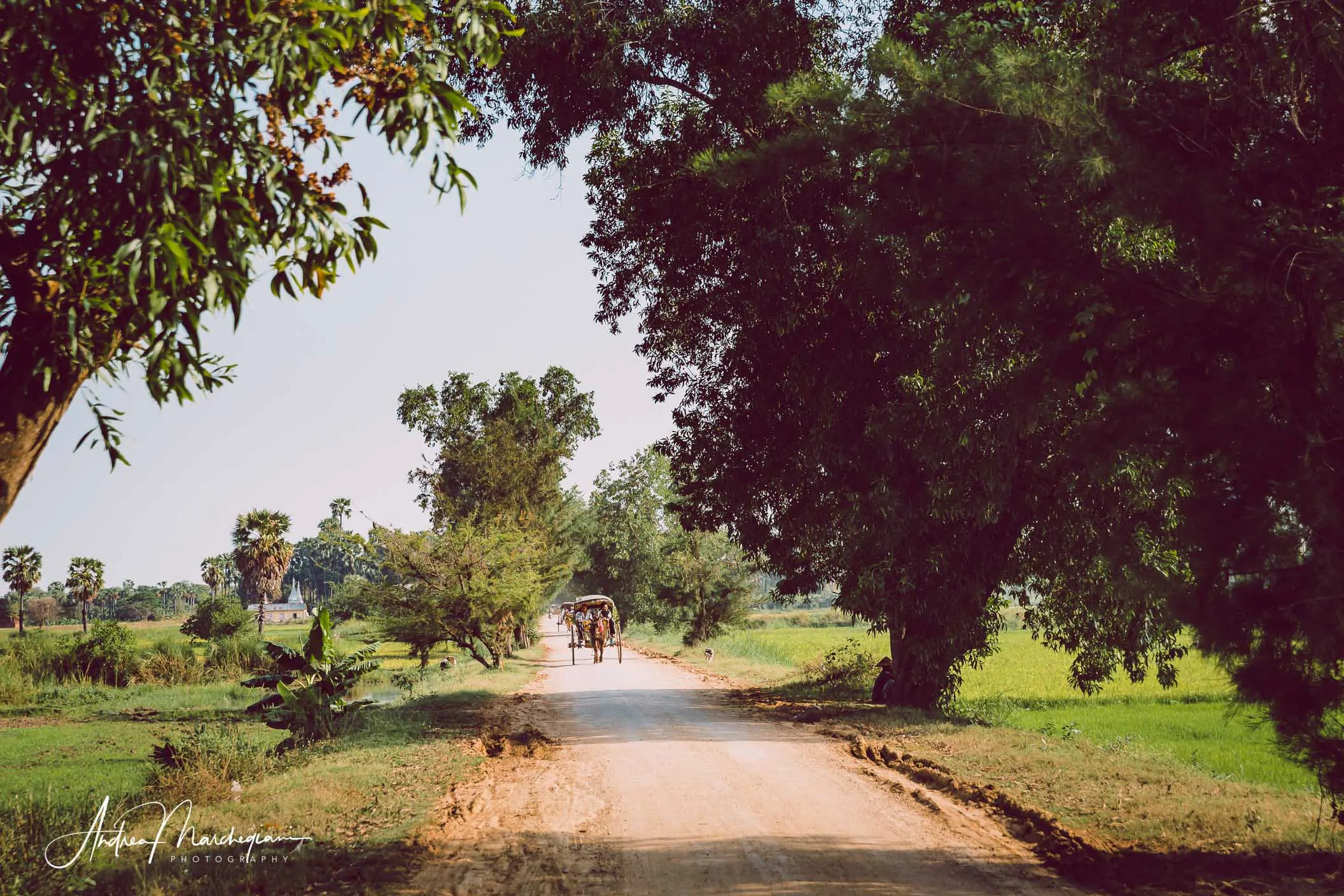
The two most interesting sites are Bagaya Kyaung Monastery and Maha Aung Myae Bon Zan Monastery.
Bagaya Kyaung Monastery
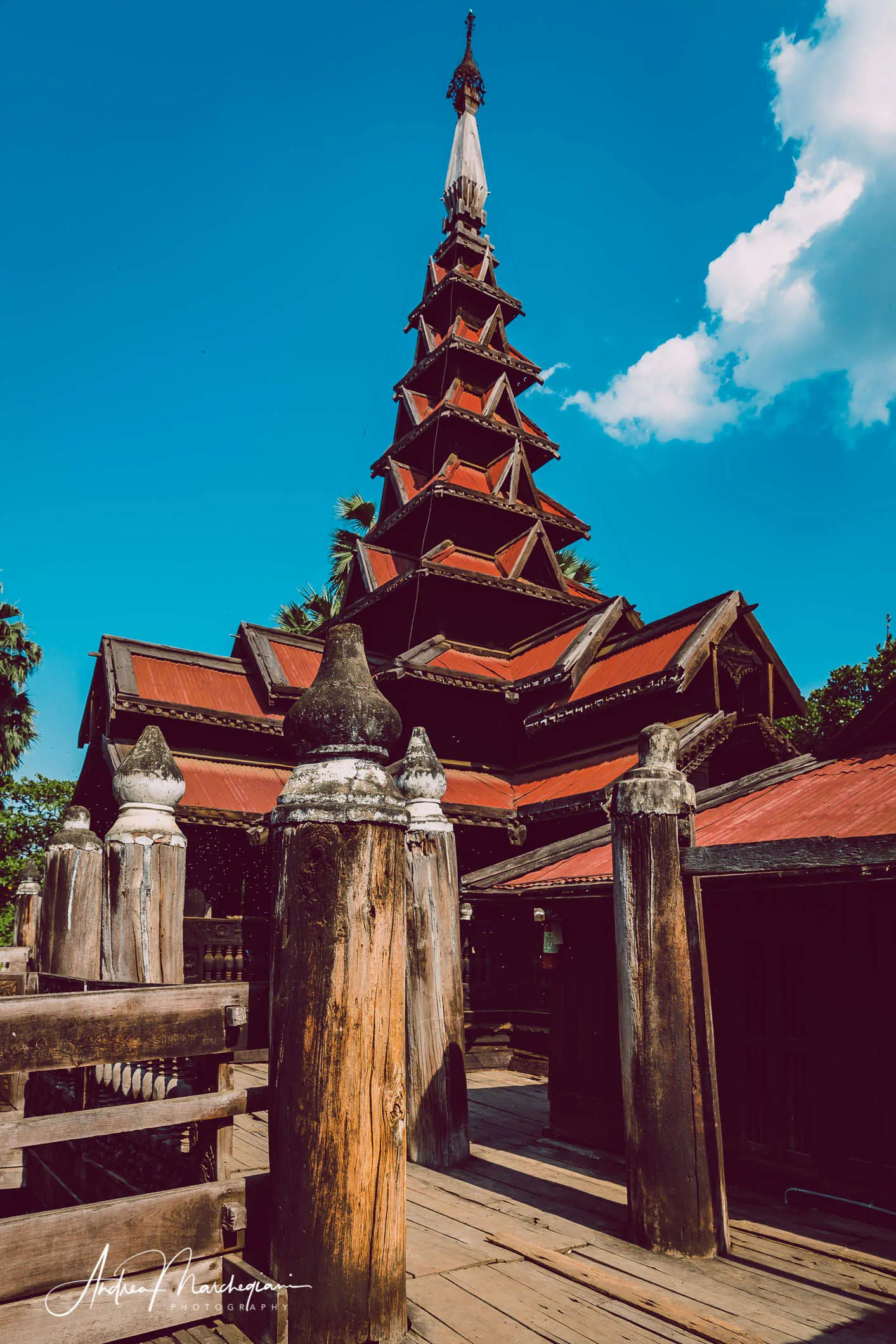
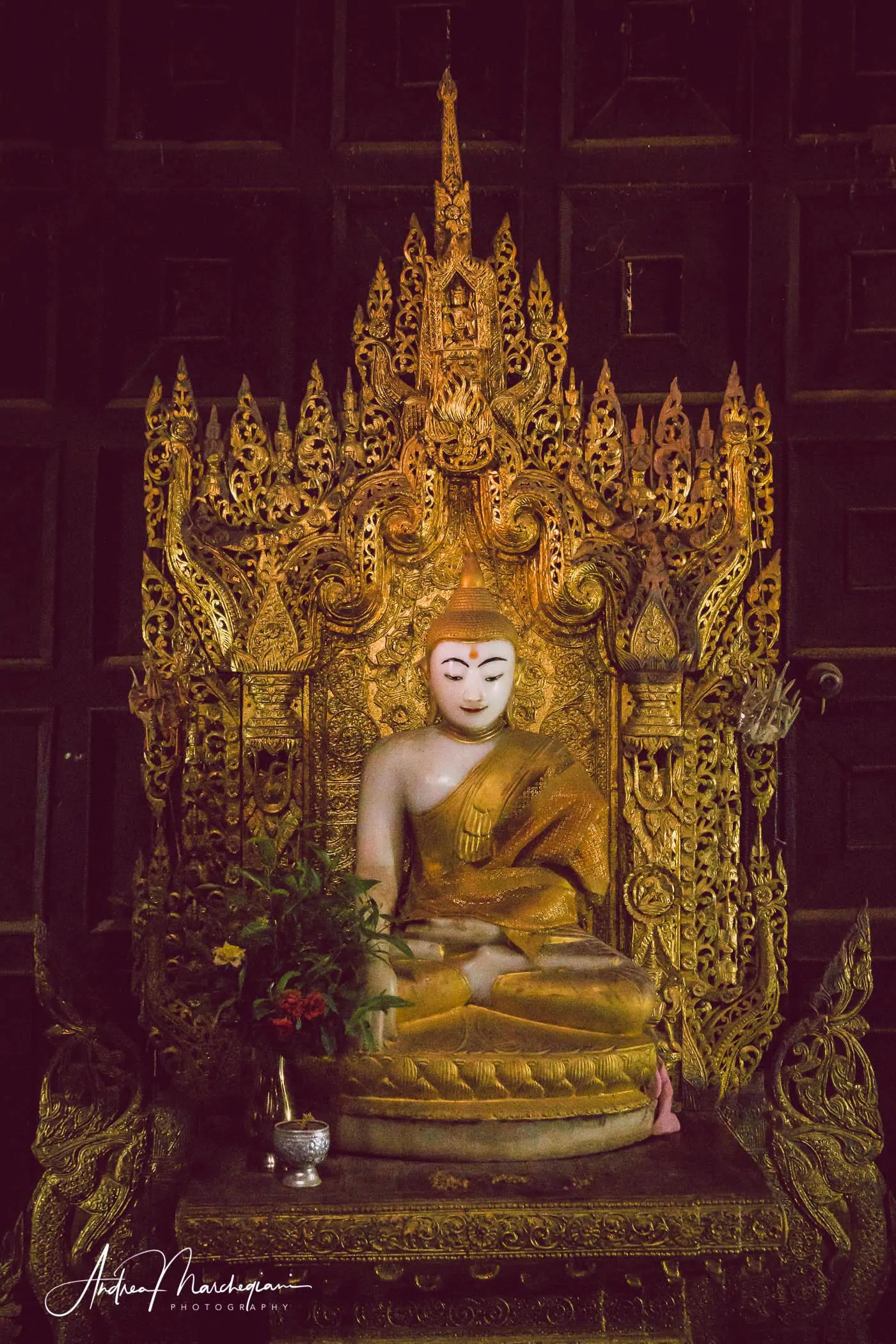
Bagaya Kyaung is a Buddhist monastery built entirely of wood, with 267 teak pillars. It is one of the few not to have undergone invasive restoration, which makes it very special. Built in 1834, with wooden poles reaching 18 meters in height, it has a truly striking architecture.
As usual, you can only enter barefoot. A sign at the entrance reads: “Take off your shoes. If you fear the warmth of the floor stay at home“! Actually, being a bit battered, my biggest concern while visiting is to end up in a hole in the floor or stepping on a rusty protruding nail!
The rooms are bare and quite dark, with altars and statues of Buddha hidden in the shadows. The teak wood, whose essence is so eaten and darkened by time to seem smoked, is just incredible.
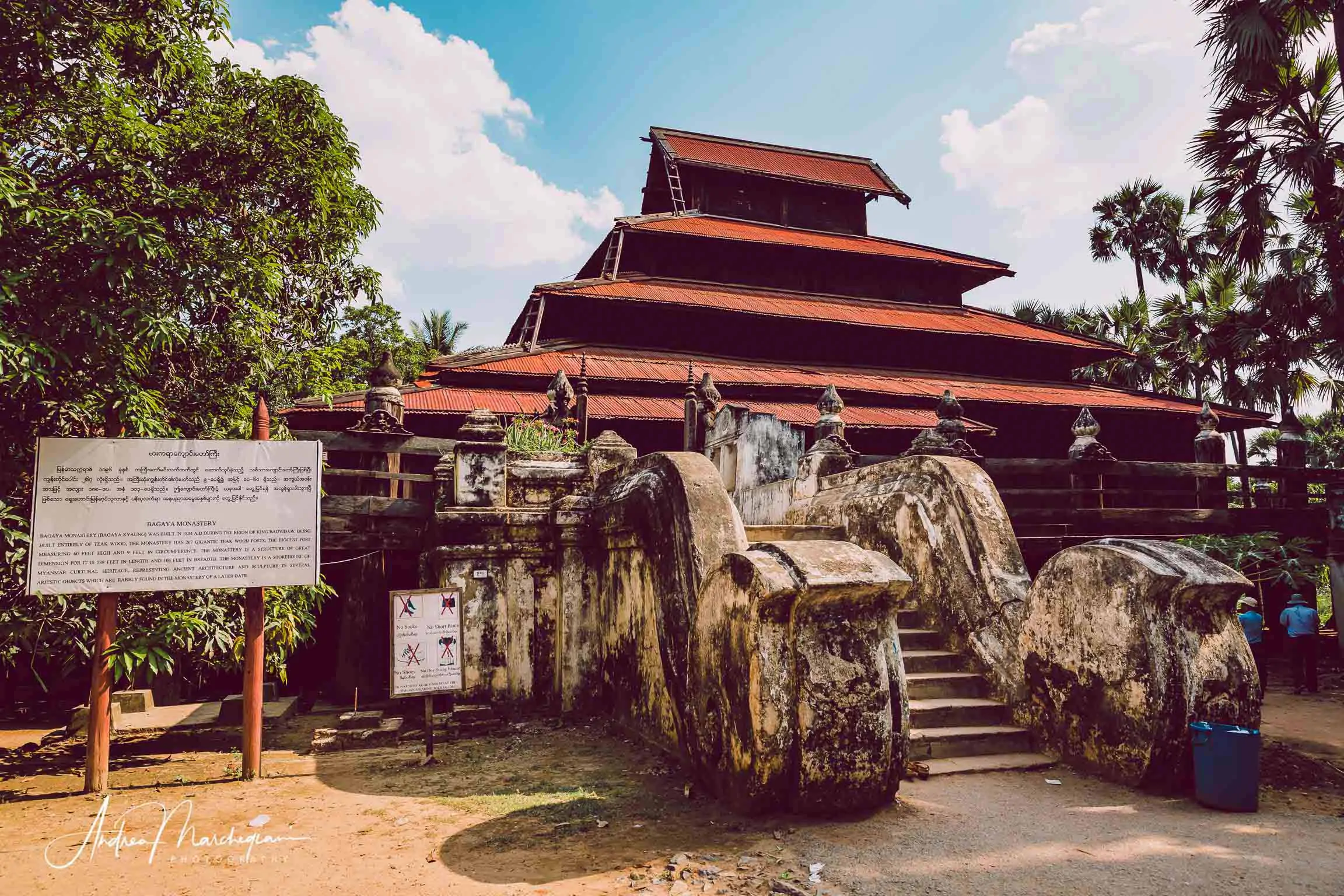
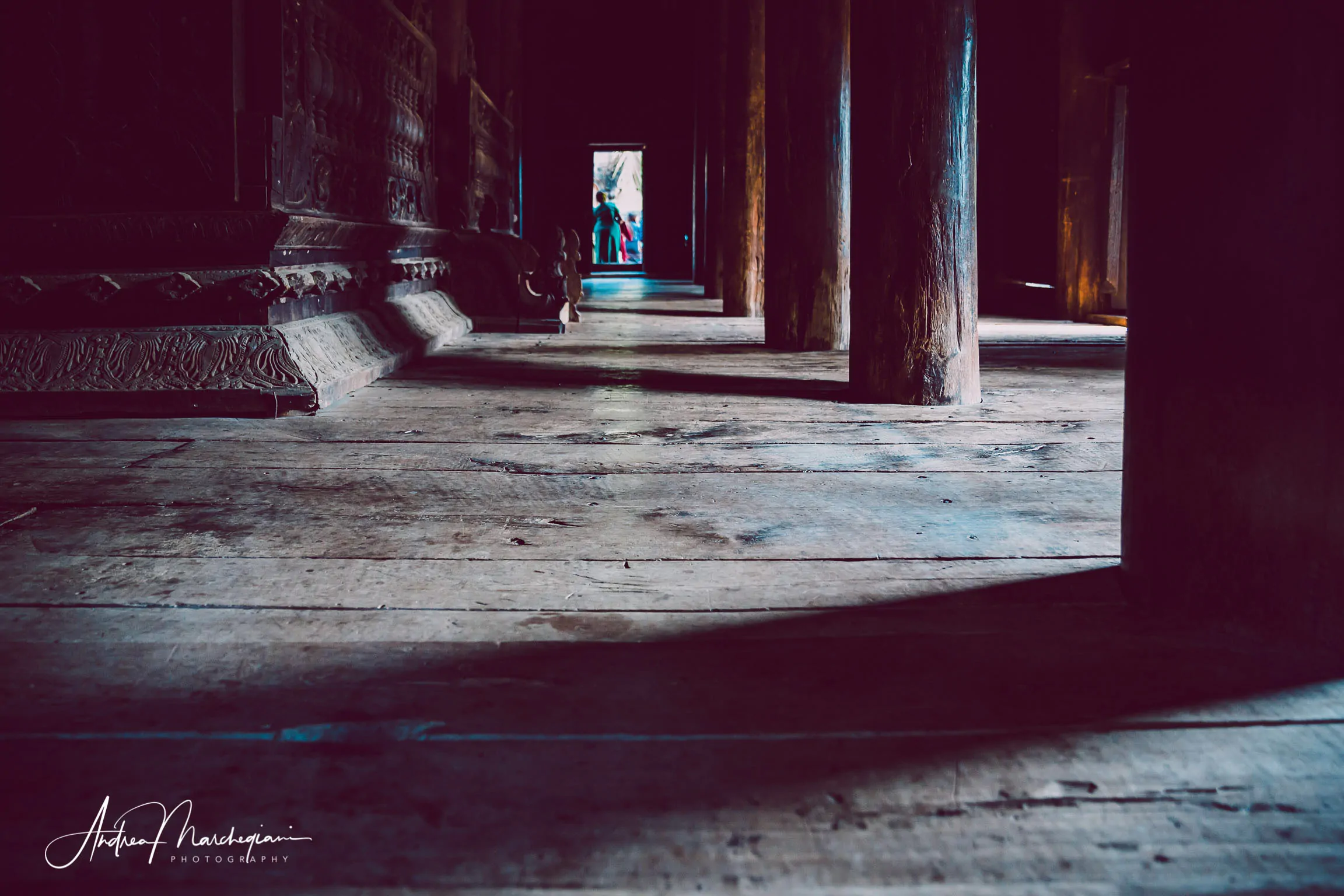
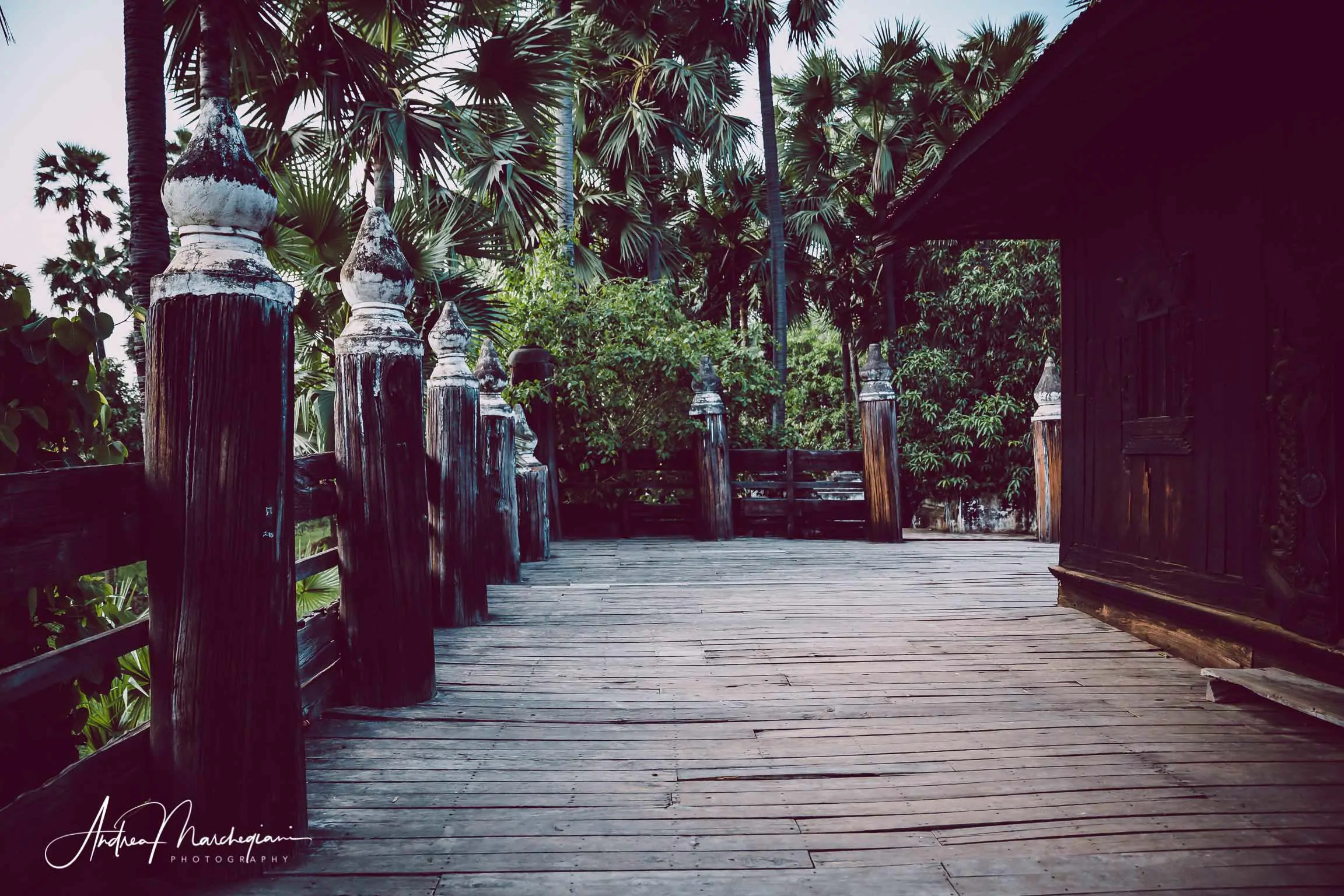
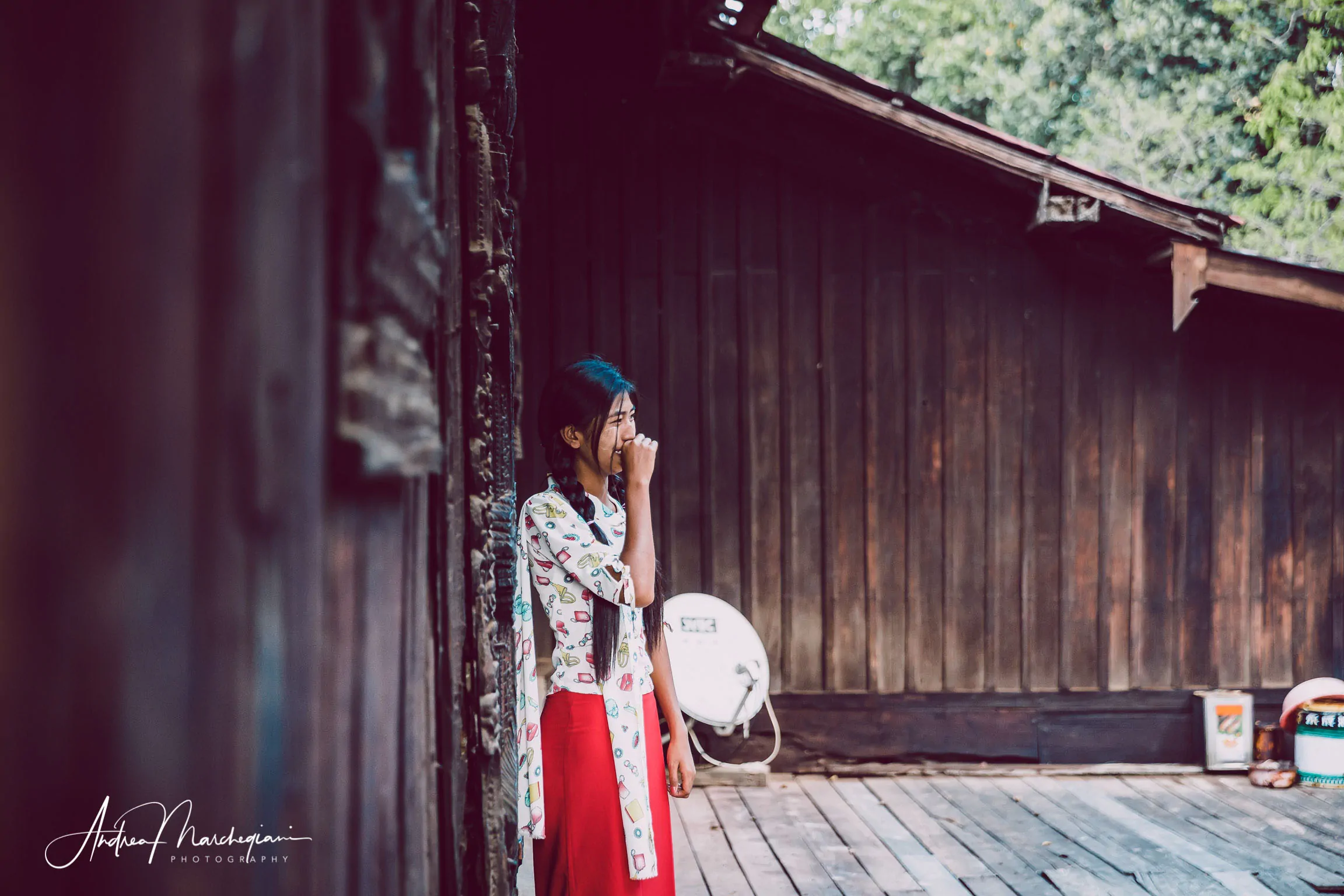
Nanmyin Tower
I return to my carriage ride: the driver does not speak a word of English but he tries to point out the most significant ruins. I understand their importance from the greatness of his smiles!
He invites me to photograph a massive brick building, which I then discover to be the Nanmyin Tower, a guard outpost of Bagyidaw Royal Palace. The tower, which leans in a worrying way, is among the few remains of the palace, which was damaged by several earthquakes over the centuries.
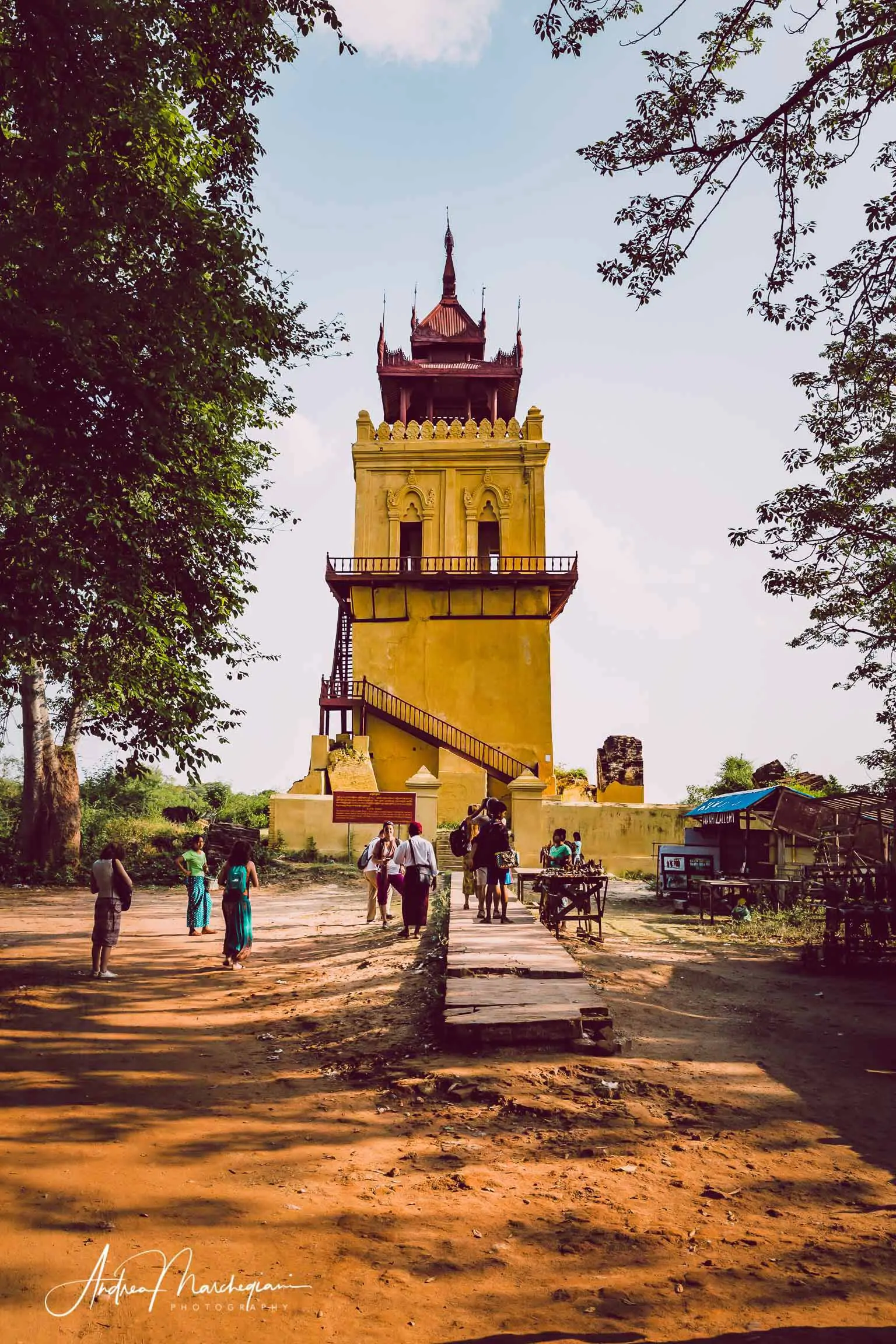
Unfortunately the earthquake of 2017 damaged some of the main attractions so badly it is now unsafe to visit them. I wonder if this is the reason why, as I discover at the end of the tour, I could not visit the complex of Yadana Hsemee Pagoda. Its Buddha statues and numerous pagodas are very reminiscent of the ones I visited at Shwe Inn Thein during my tour of Inle Lake. I tell myself that all in all I haven’t lost much, but it’s a white lie that helps me resign myself to circumstances, you don’t have to believe me!
Maha Aung Myae Bon Zan
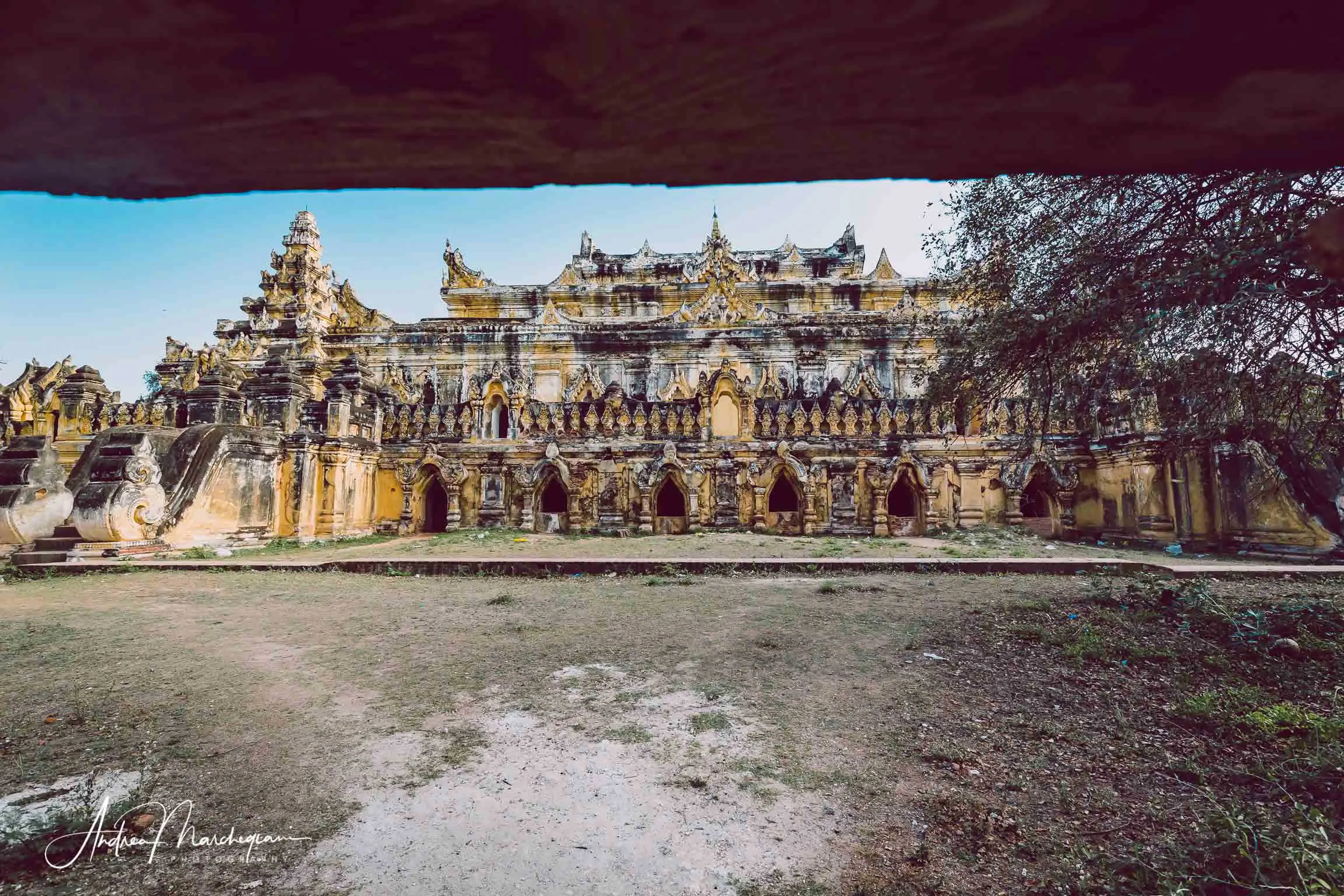
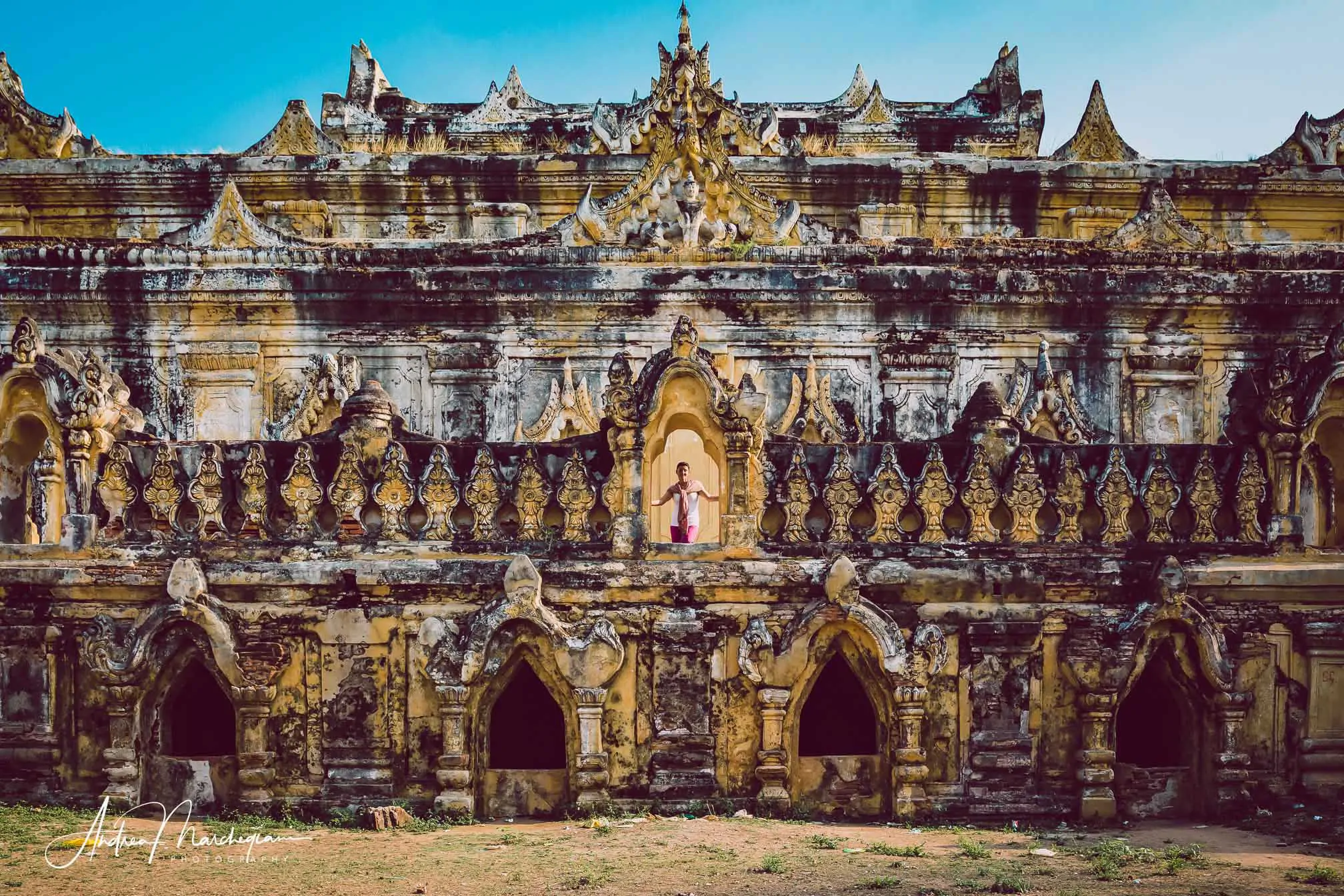
Finally I arrive at the largest and most impressive building in Ava, Maha Aung Myae Bonzan monastery. It is also called Ok Kyaung, in memory of the first queen of Bagyidaw who built it in 1818. As I wander through its ruins, I think I see her looking out the windows.
While recalling the lines of traditional architecture, the monastery is a true unicum of its kind. The queen had it built in bricks and stucco, contrary to the conventions of the time, which preferred the use of wood for sacred buildings. This allowed the monastery to withstand the frequent earthquakes in the area, although in 1838 an earthquake damaged it to the point of requiring restoration.
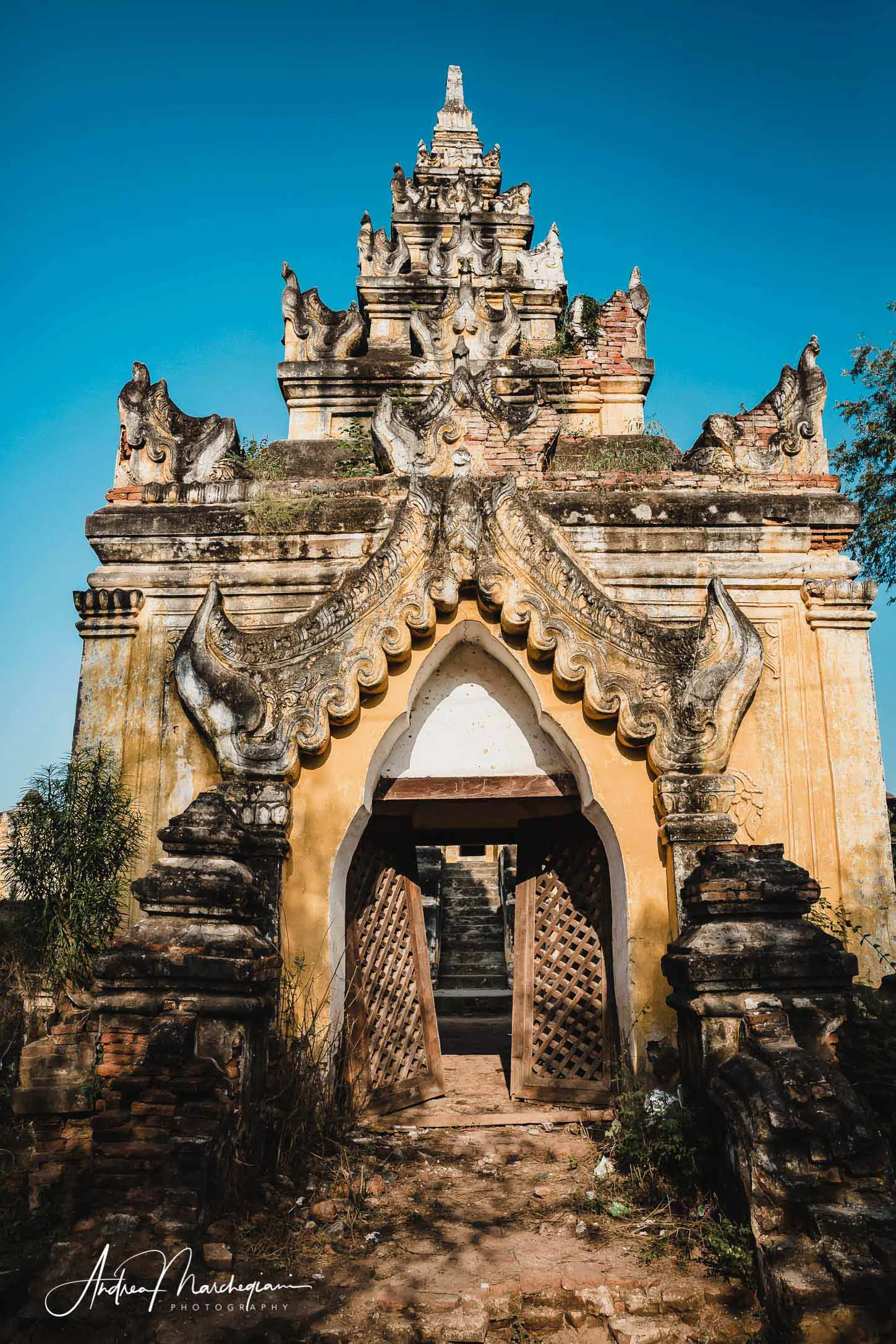
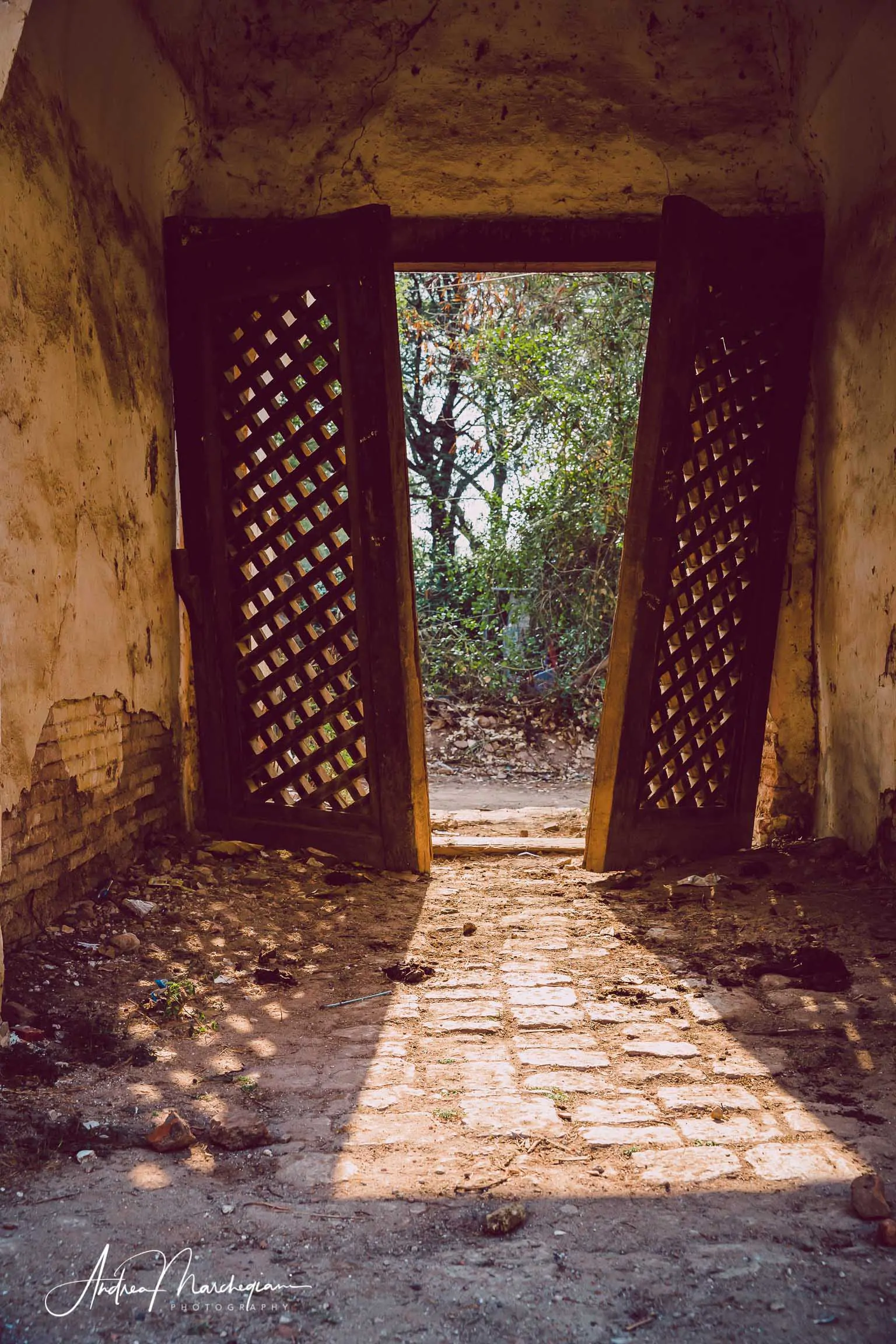
I spend the rest of the afternoon feeling lost in time.
Around me the echoes of Ava’s important past combine with the simple lifestyle of Innwa’s peasants. This contrast well embodies the essence of Myanmar, a country whose beauty is shy and reserved but which can get straight to the heart.
